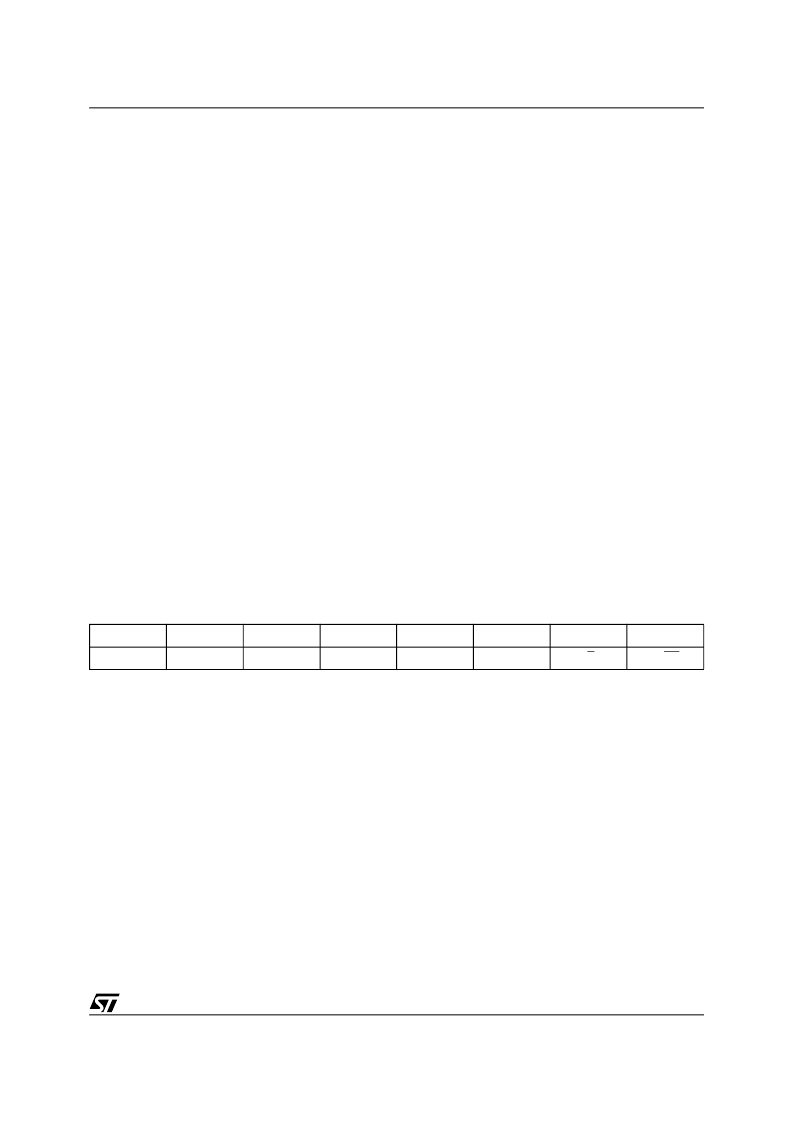- 您現(xiàn)在的位置:買賣IC網(wǎng) > PDF目錄361591 > uPSD3234B-24U1T (意法半導體) Flash Programmable System Devices with 8032 Microcontroller Core PDF資料下載
參數(shù)資料
| 型號: | uPSD3234B-24U1T |
| 廠商: | 意法半導體 |
| 英文描述: | Flash Programmable System Devices with 8032 Microcontroller Core |
| 中文描述: | 閃存可編程系統(tǒng)設(shè)備與8032微控制器內(nèi)核 |
| 文件頁數(shù): | 53/170頁 |
| 文件大小: | 2717K |
| 代理商: | UPSD3234B-24U1T |
第1頁第2頁第3頁第4頁第5頁第6頁第7頁第8頁第9頁第10頁第11頁第12頁第13頁第14頁第15頁第16頁第17頁第18頁第19頁第20頁第21頁第22頁第23頁第24頁第25頁第26頁第27頁第28頁第29頁第30頁第31頁第32頁第33頁第34頁第35頁第36頁第37頁第38頁第39頁第40頁第41頁第42頁第43頁第44頁第45頁第46頁第47頁第48頁第49頁第50頁第51頁第52頁當前第53頁第54頁第55頁第56頁第57頁第58頁第59頁第60頁第61頁第62頁第63頁第64頁第65頁第66頁第67頁第68頁第69頁第70頁第71頁第72頁第73頁第74頁第75頁第76頁第77頁第78頁第79頁第80頁第81頁第82頁第83頁第84頁第85頁第86頁第87頁第88頁第89頁第90頁第91頁第92頁第93頁第94頁第95頁第96頁第97頁第98頁第99頁第100頁第101頁第102頁第103頁第104頁第105頁第106頁第107頁第108頁第109頁第110頁第111頁第112頁第113頁第114頁第115頁第116頁第117頁第118頁第119頁第120頁第121頁第122頁第123頁第124頁第125頁第126頁第127頁第128頁第129頁第130頁第131頁第132頁第133頁第134頁第135頁第136頁第137頁第138頁第139頁第140頁第141頁第142頁第143頁第144頁第145頁第146頁第147頁第148頁第149頁第150頁第151頁第152頁第153頁第154頁第155頁第156頁第157頁第158頁第159頁第160頁第161頁第162頁第163頁第164頁第165頁第166頁第167頁第168頁第169頁第170頁

53/170
uPSD3234A, uPSD3234BV, uPSD3233B, uPSD3233BV
Mode 2.
Mode 2 configures the Timer register as
an 8-bit Counter (TL1) with automatic reload, as
shown in
Figure 23., page 51
. Overflow from TL1
not only sets TF1, but also reloads TL1 with the
contents of TH1, which is preset by software. The
reload leaves TH1 unchanged. Mode 2 operation
is the same for Timer/Counter 0.
Mode 3.
Timer 1 in Mode 3 simply holds its count.
The effect is the same as setting TR1 = 0.
Timer 0 in Mode 3 establishes TL0 and TH0 as two
separate counters. The logic for Mode 3 on Timer
0 is shown in
Figure 24., page 52
. TL0 uses the
Timer 0 control Bits: C/T, GATE, TR0, INT0, and
TF0. TH0 is locked into a timer function (counting
machine cycles) and takes over the use of TR1
and TF1 from Timer 1. Thus, TH0 now controls the
“Timer 1“ Interrupt.
Mode 3 is provided for applications requiring an
extra 8-bit timer on the counter. With Timer 0 in
Mode 3, an uPSD323X Devices can look like it has
three Timer/Counters. When Timer 0 is in Mode 3,
Timer 1 can be turned on and off by switching it out
of and into its own Mode 3, or can still be used by
the serial port as a baud rate generator, or in fact,
in any application not requiring an interrupt.
Timer 2
Like Timers 0 and 1, Timer 2 can operate as either
an event timer or as an event counter. This is se-
lected by Bit C/T2 in the special function register
T2CON. It has three operating modes: capture,
autoload, and baud rate generator, which are se-
lected by bits in the T2CON as shown in
Table
41., page 54
. In the Capture Mode there are two
options which are selected by Bit EXEN2 in
T2CON. if EXEN2 = 0, then Timer 2 is a 16-bit tim-
er or counter which upon overflowing sets Bit TF2,
the Timer 2 Overflow Bit, which can be used to
generate an interrupt. If EXEN2 = 1, then Timer 2
still does the above, but with the added feature
that a 1-to-0 transition at external input T2EX
causes the current value in the Timer 2 registers,
TL2 and TH2, to be captured into registers
RCAP2L and RCAP2H, respectively. In addition,
the transition at T2EX causes Bit EXF2 in T2CON
to be set, and EXF2 like TF2 can generate an in-
terrupt. The Capture Mode is illustrated in
Figure
25., page 55
.
In the Auto-reload Mode, there are again two op-
tions, which are selected by bit EXEN2 in T2CON.
If EXEN2 = 0, then when Timer 2 rolls over it not
only sets TF2 but also causes the Timer 2 regis-
ters to be reloaded with the 16-bit value in regis-
ters RCAP2L and RCAP2H, which are preset by
software. If EXEN2 = 1, then Timer 2 still does the
above, but with the added feature that a 1-to-0
transition at external input T2EX will also trigger
the 16-bit reload and set EXF2. The Auto-reload
Mode is illustrated in Standard Serial Interface
(UART)
Figure 26., page 55
. The Baud Rate Gen-
eration Mode is selected by (RCLK, RCLK1)=1
and/or (TCLK, TCLK1)=1. It will be described in
conjunction with the serial port.
Table 40. Timer/Counter 2 Control Register (T2CON)
7
6
5
4
3
2
1
0
TF2
EXF2
RCLK
TCLK
EXEN2
TR2
C/T2
CP/RL2
相關(guān)PDF資料 |
PDF描述 |
|---|---|
| uPSD3234B-24U6T | Flash Programmable System Devices with 8032 Microcontroller Core |
| uPSD3234B-40T1T | Flash Programmable System Devices with 8032 Microcontroller Core |
| uPSD3234B-40T6T | Flash Programmable System Devices with 8032 Microcontroller Core |
| uPSD3234B-40U1T | Flash Programmable System Devices with 8032 Microcontroller Core |
| uPSD3234B-40U6T | Flash Programmable System Devices with 8032 Microcontroller Core |
相關(guān)代理商/技術(shù)參數(shù) |
參數(shù)描述 |
|---|---|
| UPSD3234B-24U6 | 制造商:STMICROELECTRONICS 制造商全稱:STMicroelectronics 功能描述:Flash Programmable System Device with 8032 Microcontroller Core |
| UPSD3234B-24U6T | 制造商:STMICROELECTRONICS 制造商全稱:STMicroelectronics 功能描述:Flash Programmable System Devices with 8032 Microcontroller Core and 64Kbit SRAM |
| UPSD3234B-40T1 | 制造商:STMICROELECTRONICS 制造商全稱:STMicroelectronics 功能描述:Flash Programmable System Device with 8032 Microcontroller Core |
| UPSD3234B-40T1T | 制造商:STMICROELECTRONICS 制造商全稱:STMicroelectronics 功能描述:Flash Programmable System Devices with 8032 Microcontroller Core |
| UPSD3234B-40T6 | 制造商:STMICROELECTRONICS 制造商全稱:STMicroelectronics 功能描述:Flash Programmable System Device with 8032 Microcontroller Core |
發(fā)布緊急采購,3分鐘左右您將得到回復。